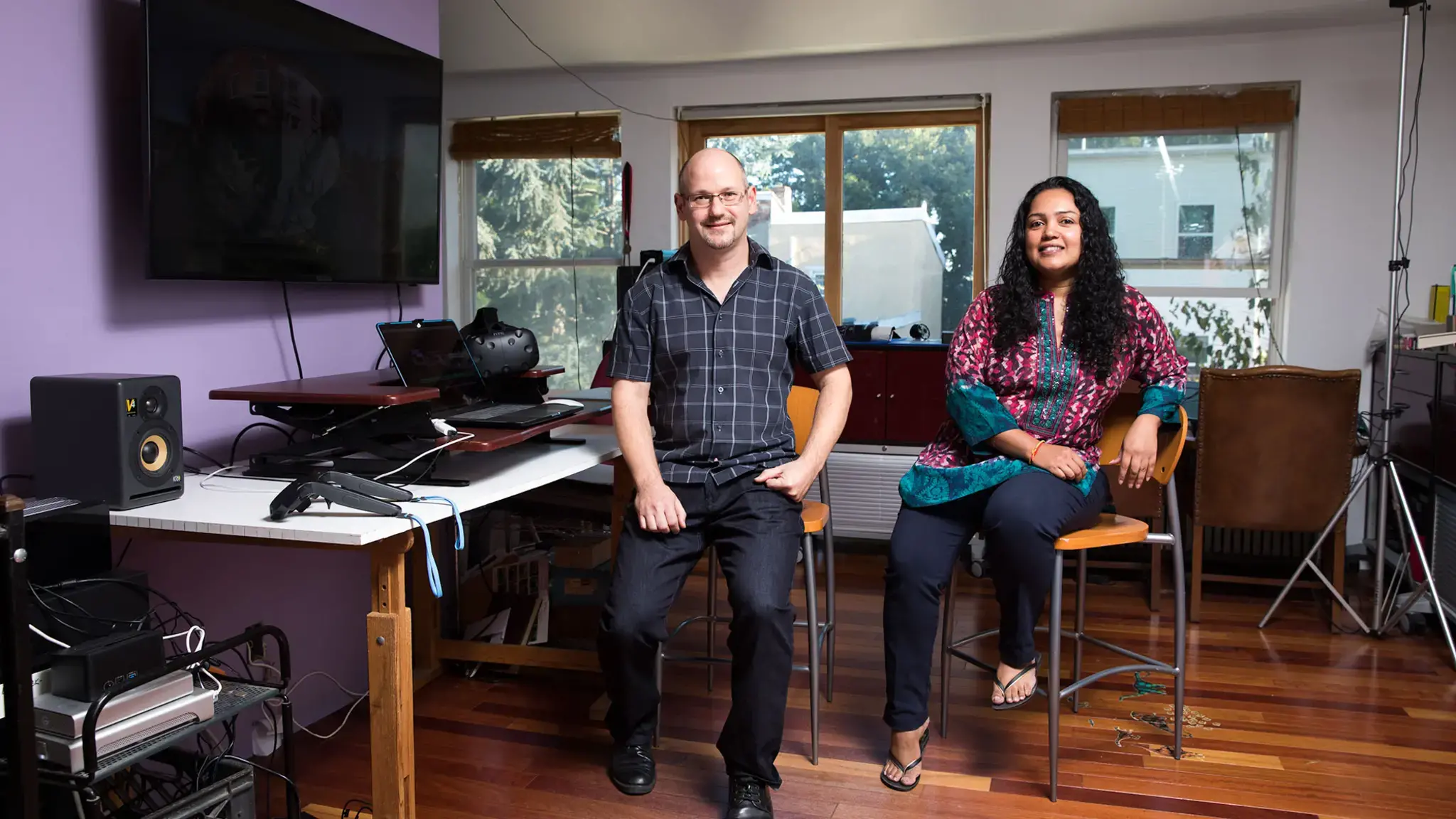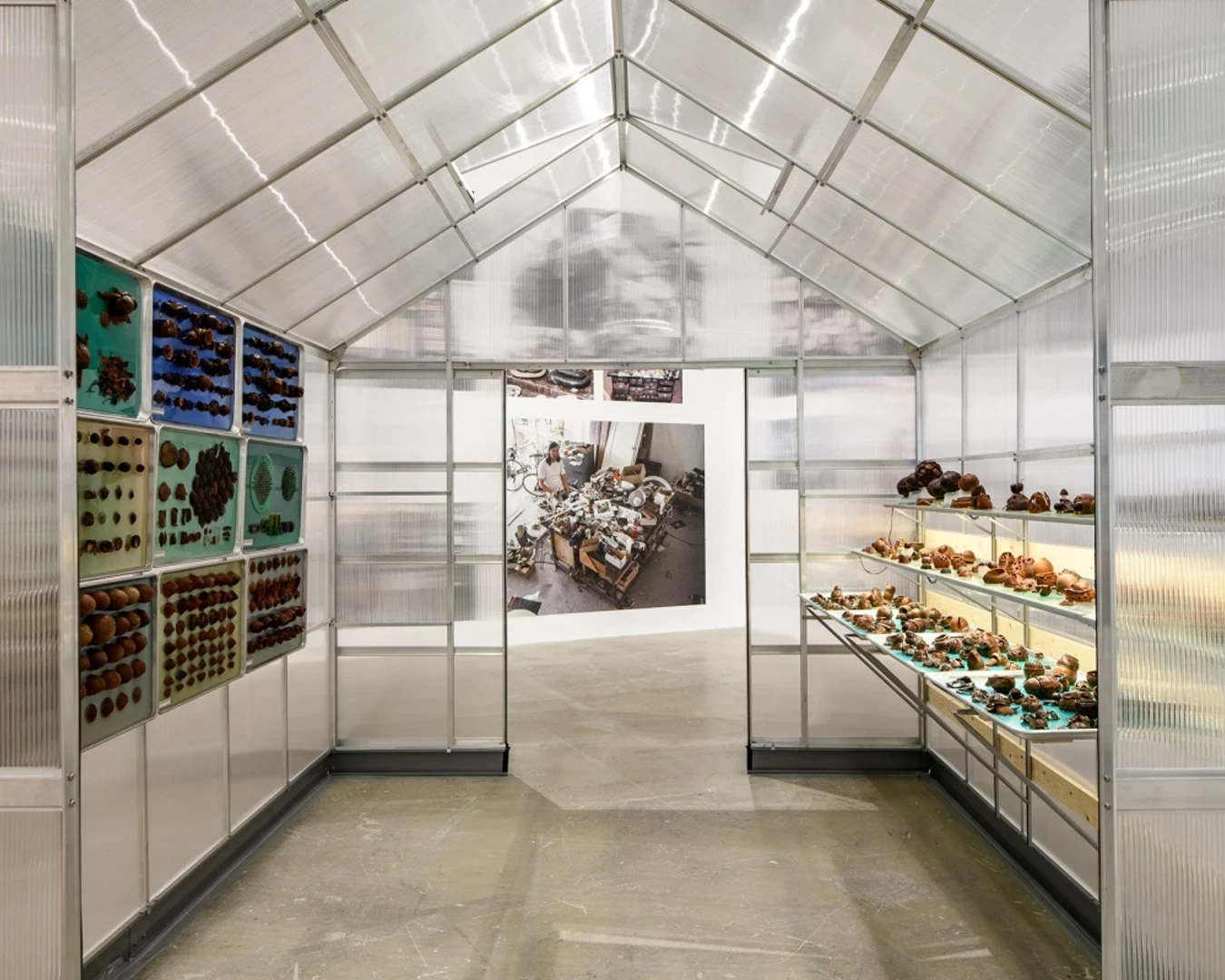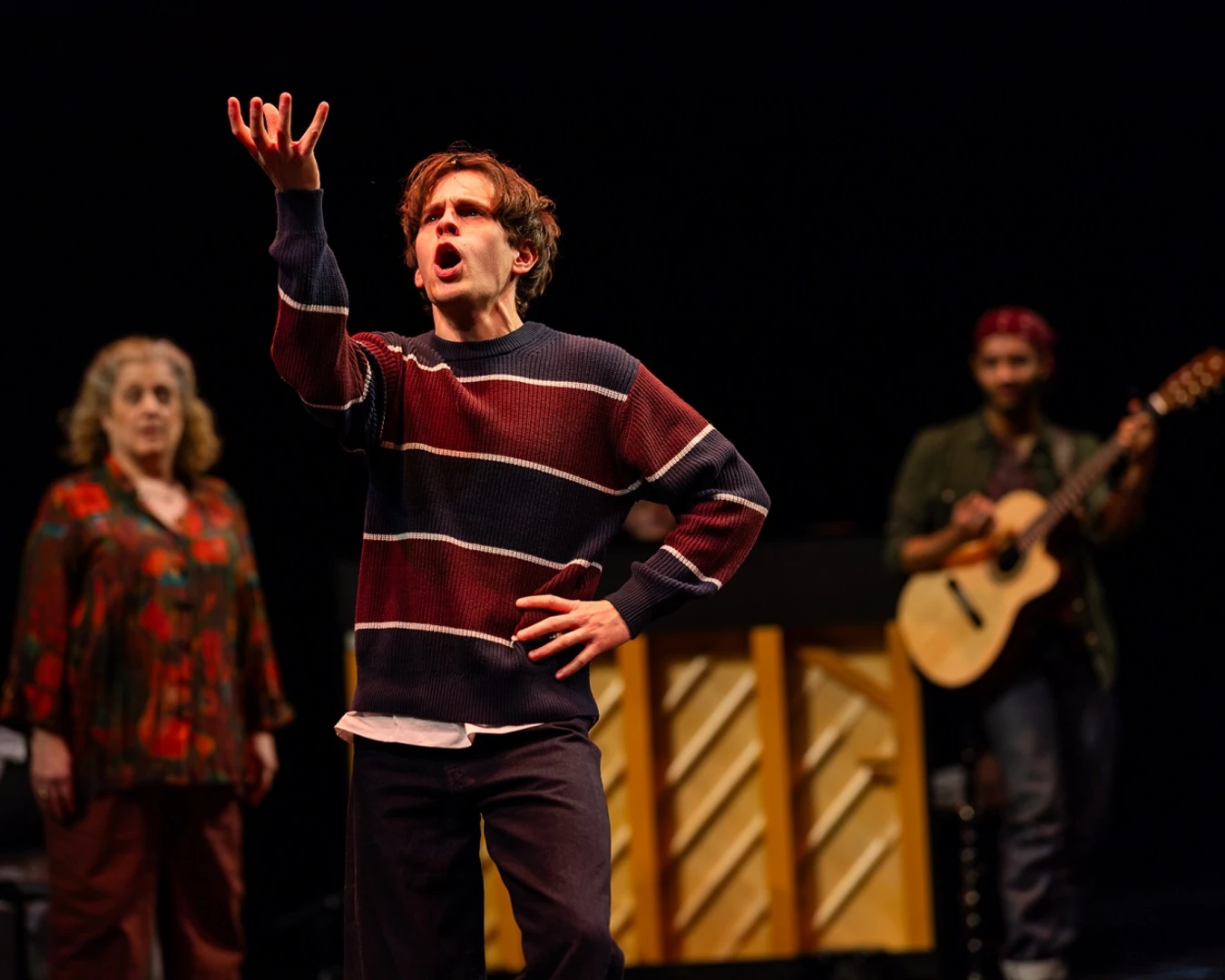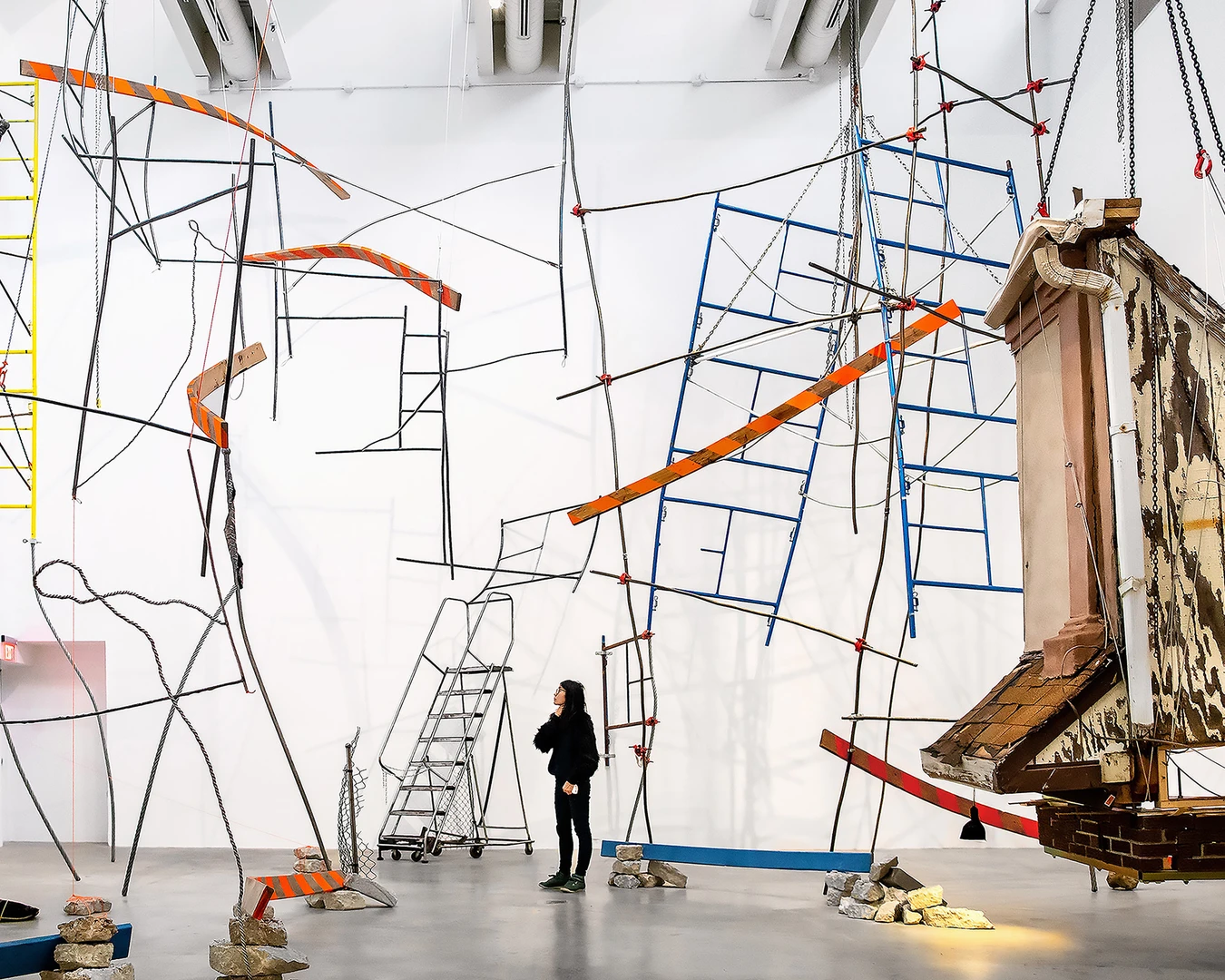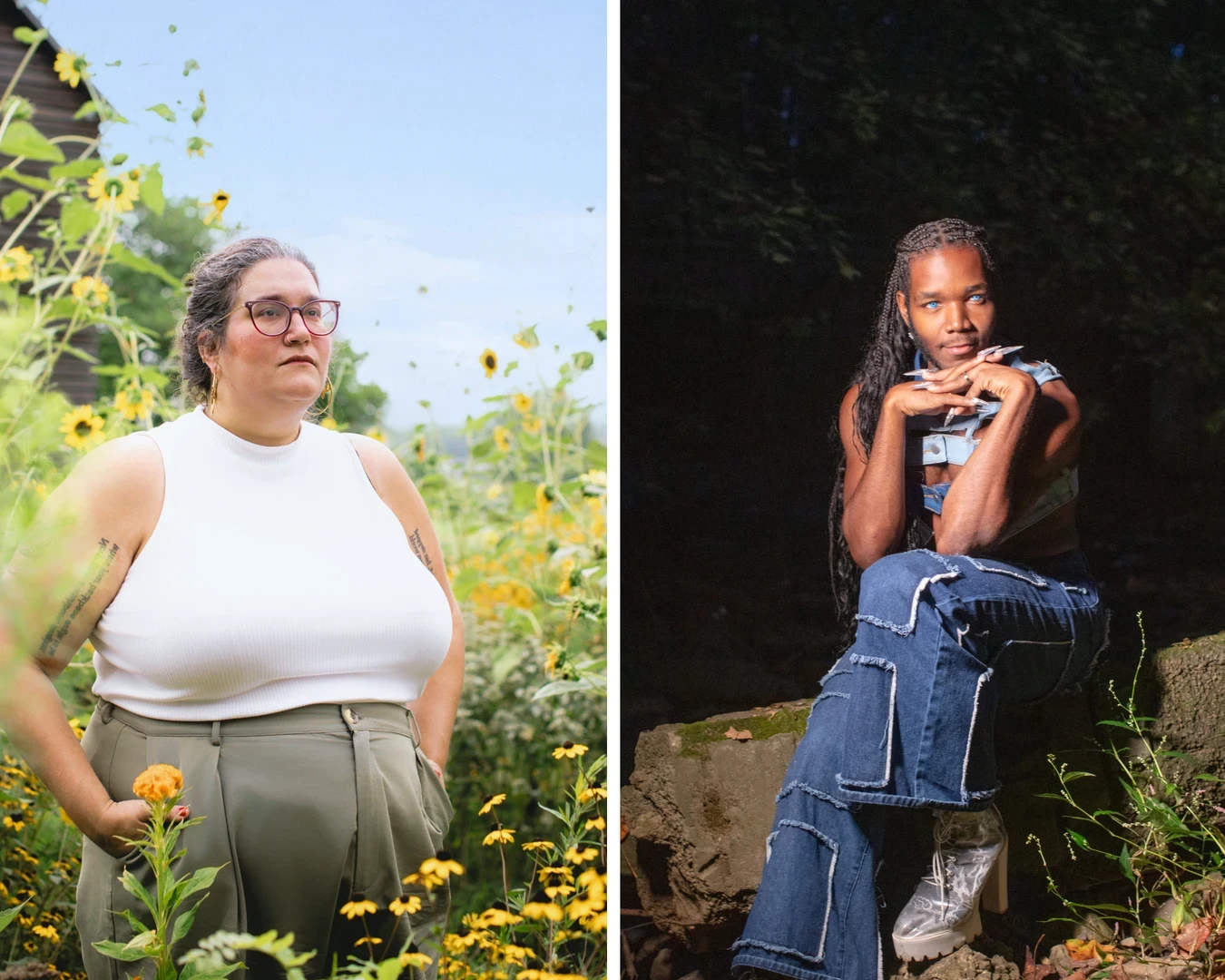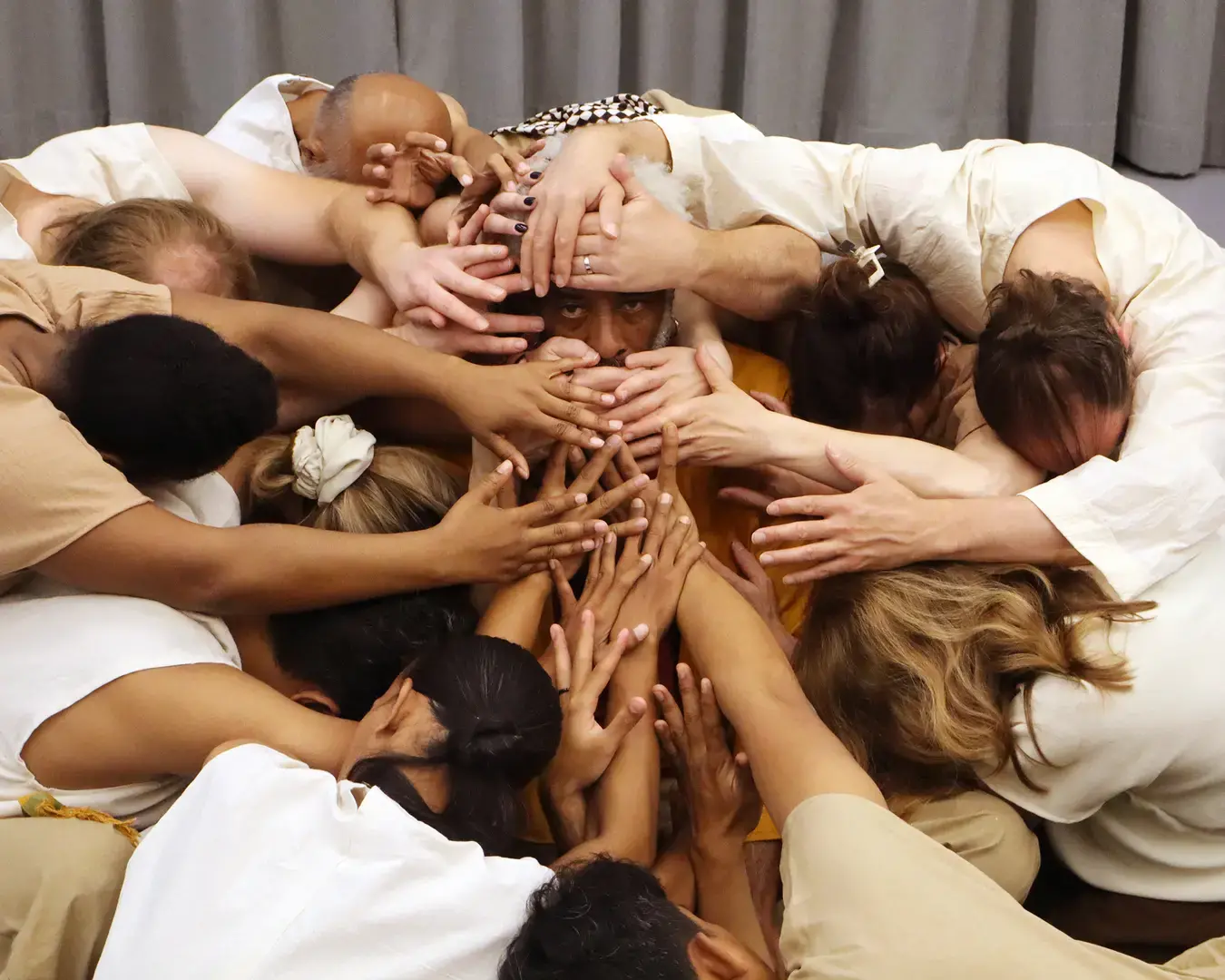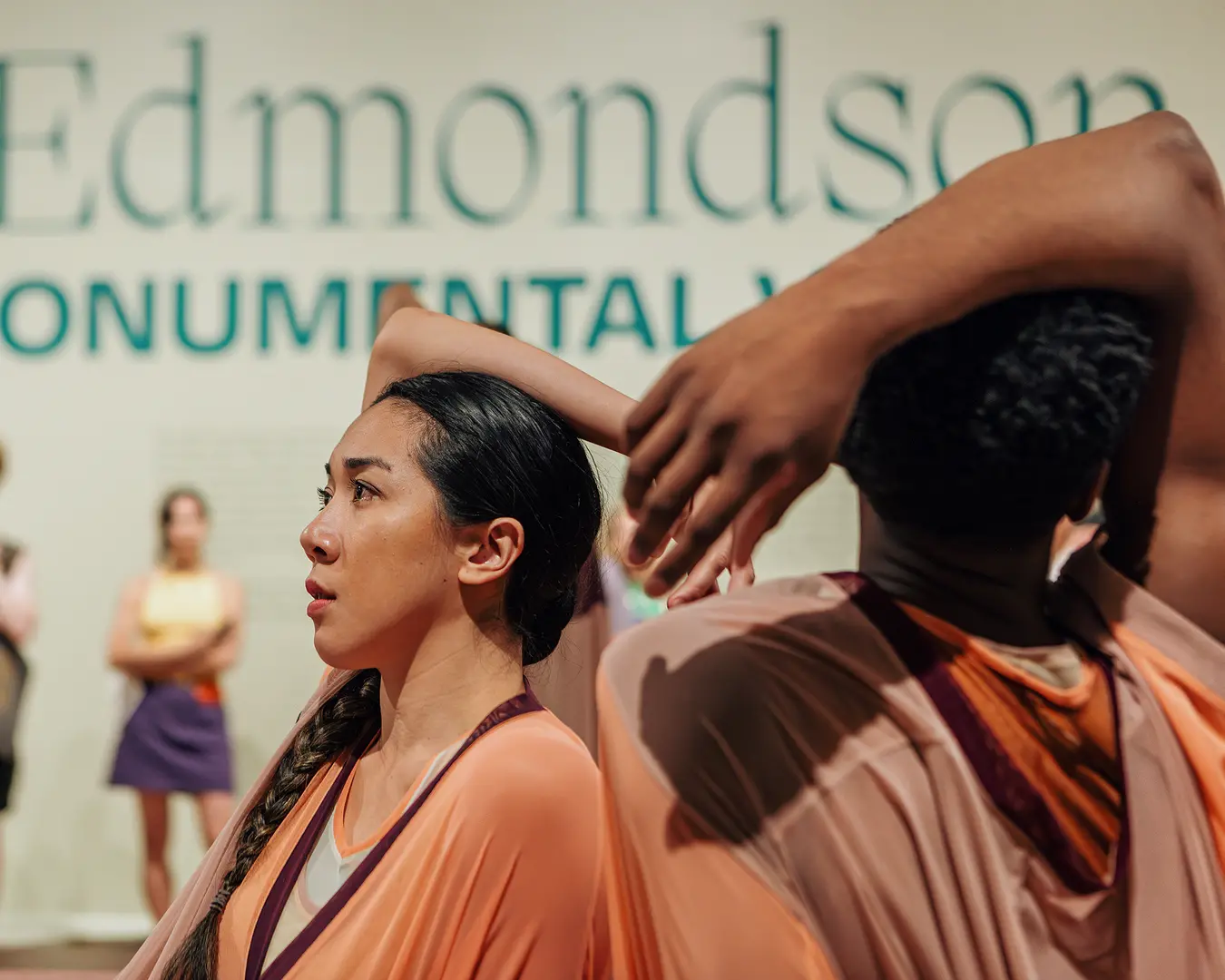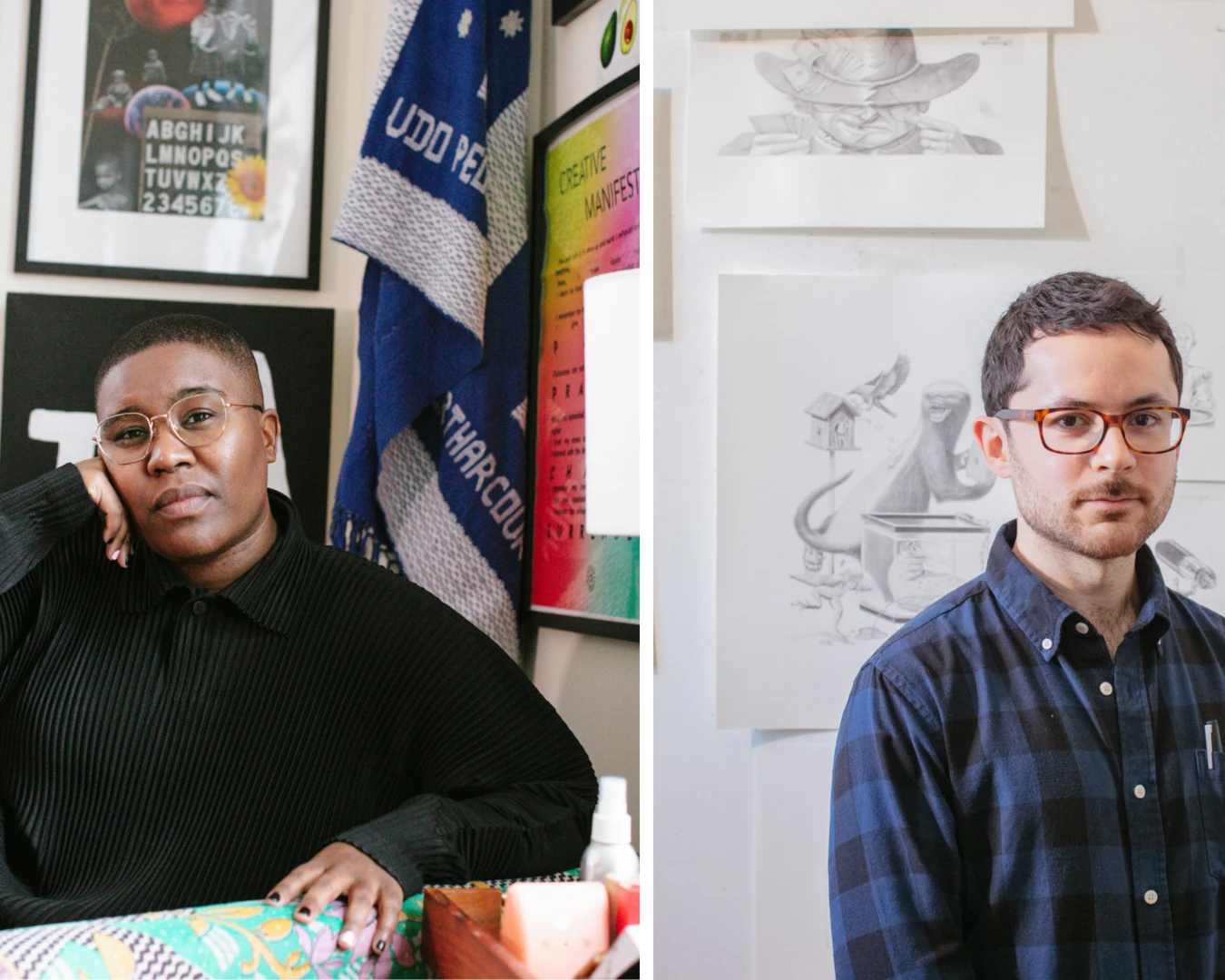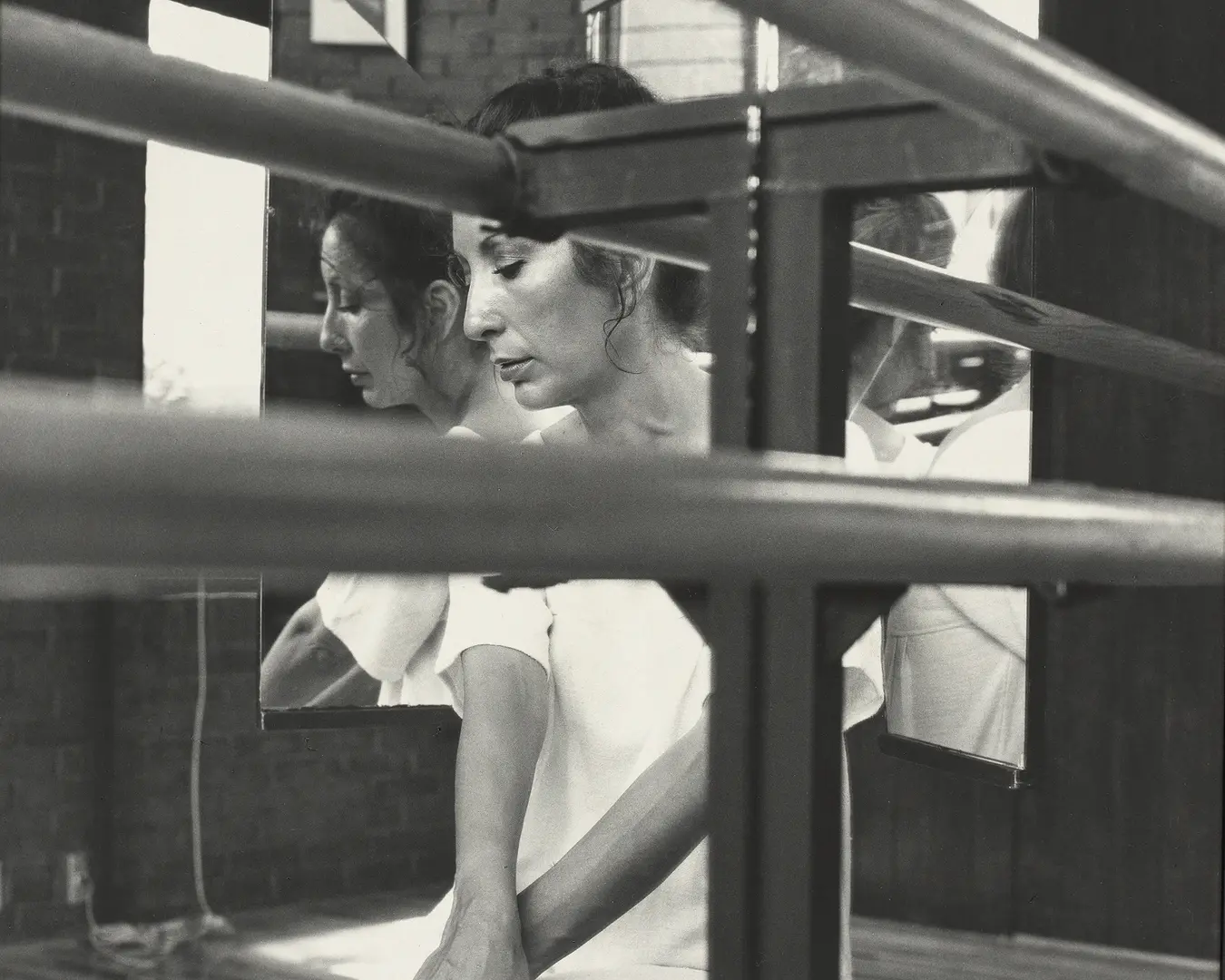Our Pew Fellows interview series focuses on the artistic lives of our Fellows: their aspirations, influences, and creative challenges.
This week, we speak to media artists Michael Kuetemeyer and Anula Shetty (2017) who combine new media storytelling and immersive documentary forms with socially engaged art-making practices to explore themes of place, cultural identity, memory, and hidden histories. The collaborative team is interested in expanding access and use of emerging technologies such as mobile apps, augmented reality, and virtual reality while, as they explain, “creating socially impactful work with communities.” They are currently at work on Places of Power, an immersive web and virtual reality project, created in collaboration with community residents, that invites viewers to experience a shifting North Philadelphia neighborhood.
Your artistic practice is collaborative. Can you explain each of your roles and your distinctive contributions? What are the benefits of working as an artistic team?
Our first collaboration was Kamaka’eha Aching Eye, a poetic documentary about six native Hawaiians and their relationship to Hawaii’s cultural, geological, and political history. In the process of making the film, we discovered that by combining our creative visions, we were able to create a much more layered and complex work. Mike’s background is in meteorology. He is interested in media’s ability to be both a physical, chemical, and electronic record of reality, as well as a creative dance of images, sounds, and time. Anula’s background is in literature and performance. What fascinates her about storytelling is the ability to share an experience and create meaningful connections.
We are both involved in all aspects of our productions. Most of our work is filmed, edited, and authored by us, and collaboration is key to our artistic practice. One of the most exciting aspects of our work has been our interactions with fellow artists, and the synergy of ideas our collaboration facilitates. We are both long-term members of Termite TV, an artist-run media arts collective.
You are currently at work on Places of Power, an immersive web and virtual reality project that invites viewers to experience a shifting North Philadelphia neighborhood. What interests you about the realm of virtual reality? What can new media technologies bring to your storytelling as artists?
We are in a unique era where media can be used to explore specific locations in their multi-temporal forms. Virtual reality (VR) can bring an immersive representation of a location to a remote viewer, and augmented reality (AR) can add layers of information to the viewer’s current location.
In our “geolocative” projects, such as Time Lens – Pearl Street and our current project Places of Power, we are creating works that explore urban spaces through multiple layers of time and community stories. We are fascinated by the immersive 360-degree panoramic space and its potential to allow viewers to experience place and story in a different way. As we continue to work on Places of Power, we want to further explore how VR can amplify community members’ sense of memory, kinship, connection, and empathy.
In May 2017, we worked with community groups in Phnom Penh, Cambodia to create new media projects about environmental sustainability as part of the American Arts Incubatorinternational creative exchange program. Understanding sustainability and climate change requires seeing broader spans of time. New media technologies that use AR and VR allow us to tap into this idea of seeing the past, present, and future at the same time. This enables a deeper understanding of the ways in which our actions today determine how the environment is affected in the future.
The exciting potential of new media technologies is that peoples' use of it has not been trained by a lifetime of cultural influence. Through our collaborative community projects, participants are able have a more pure and personally pioneering experience in imagining the potential for AR and VR as tools for art-making and creating social change.
You’ve said that your work is interested in “creating socially impactful work with communities.” What role do you think artists can play in communities and in society?
We are strong believers in the transformative power of art—the power to inspire, to move people to action, and to create positive change. Our work is an evolving combination of experimental documentary film and socially engaged participatory media. As artists, we introduce the elements of creativity, mystery, poetry, and innovation; we invite communities to think of approaching a social issue through a different lens. The community members that we collaborate with—such as the dozens of North Philadelphia residents and artists who are participating in our current project Places of Power—are often long-time residents who are deeply committed to their neighborhood’s history, memories, and relationships. As artists, we create an environment where community members’ first experiences with AR and VR technologies are as tools to create art projects for social change, rather than simply commercial applications for a corporate product. Through our collaborative projects, we support community groups to realize their potential as makers and innovators.
What single ethical consideration most impacts the decisions you make as a collaborative team?
A key ethical consideration when we embark on a social practice project is that the process is collaborative and involves skill-sharing and creative exchange. Building lasting relationships with community members is the most important part of our practice, and this takes time. Some of our projects bridge several years. With every new project, we are creating a family. In the planning process, we also try to design infrastructure and capacity that will last beyond the project and will lead to further actions in the community. As we engage in the process of creating collaborative projects with communities, we gather information about what the community wants, but often participants with diverse needs and interests voice competing ideas. How can we develop the structure and content of the final work to adequately respond to all participants? We have to establish a relationship of openness and trust, while also striving to create a work that we feel expresses our own vision for any given project. These are the core challenges of participatory, community art-making.
In reflecting back to the beginning of your careers, what is the most useful advice each of you received?
MK
The essay, “White Elephant Art vs. Termite Art” (1962), by art critic Manny Farber was a key early inspiration. Farber describes White Elephant Art as art that “strives for perfection, an expensive hunk that sucks in time, money, resources and that sits heavily over the talent of every artist.” On the other hand, he suggests, “termite-tapeworm-fungus-moss-art, moves always forward, eating its own boundaries and leaves nothing in its path other than the signs of eager, industrious, unkempt activity.” This was the inspiration for the name Termite TV—emphasizing exploration, risk-taking, and innovation.
AS
At a screening of my first film, I met the filmmaker Adoor Gopalakrishnan. While discussing the challenge of casting my main character, based on an 85-year old woman, Gopalakrishnan said that in the enhanced visual medium of film, an authentic look and presence that matches the character to be portrayed is more effective than using a trained actor who may not quite match the part. It made me realize the value of the documentary component in a narrative film. When discussing how my film played out cross-culturally, he said that as an artist, you don’t always need to explain your work. This conversation led me to emphasize authenticity and cultural specificity in my projects.
What images or things keep you company in the space where you work?
Our studio is filled with mementos from our projects and gifts from community groups we have worked with: a framed poster of the film Torn, signed by youth participants of a movie-making workshop at Reichhold Center in the US Virgin Islands; a hand-drawn portrait from a community group in Cambodia; scrap pieces of wood from a previous installation that will one day be used to build the prototype for a new project; a toy school bus with Termite TV printed on its side that was rolled down the aisle of the screening room at MOMA to inaugurate a six-month “Living Documentary” bus tour across the US; layered metal screens that produce visual interference patterns; and lots of solar panels.
What is perfection to you, in the context of your work?
Perfection for us lies in the process of creation, the sense of being in the flow. Inspirations and ideas from one project feed into other projects. We take inspiration from sustainable energy practices. Sustainability is achieved when the power generated balances the power that is needed. Once that point is reached, we have caught the wave and are surfing on photons streaming from the sun. In the same way, seeing our projects in their past, present, and future manifestations, all coming together is like that moment of catching a wave.
